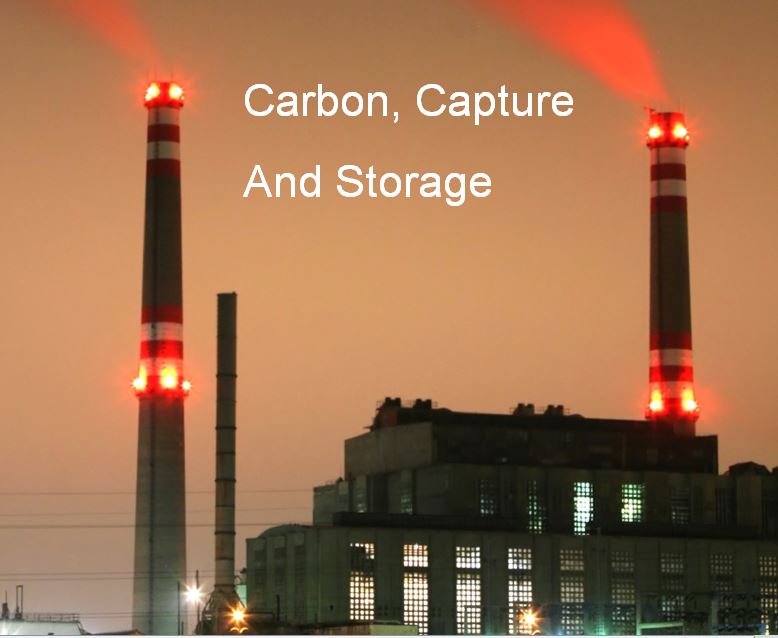
The paradox of Carbon Capture and Storage (CCS). What follows is an argument that will make anyone who believes
they are an environmentalist totally cringe and the person making the argument will be deemed as evil once and forever. Here is the argument: "The Greenest thing that we can do is to develop
CCS technology and give it away (to China) fro free"
"That is a completely absurd statement to make, that would only serve to encourage continued use of Coal in order to generate electricity. We must discourage the use of coal, not encourage it, you imbecilic cretin!"
Okay let's think about this concept for a moment:
- Are we currently building out replacement infrastructure for coal fired electricity?
- If the answer is Yes, then the purple text above has a valid point.
- If the answer is no, then the real world reality is that both the US and China are going to continue to burn coal for effectively the next few decades.
So we have two options to lower the amount of CO2 that we put into the atmosphere via electricity generation: a) put more resources into developing renewable electricity in order to
start shutting down coal plants - de-facto we are trying to do this in the US by substituting NG for coal and thus not solving the problem; or b) Realize that we can't deploy renewable energy
technologies fast enough and hence develop CCS systems that acknowledge that coal will still be a major source of electricity.
It's your choice. A or B. Flip a coin?
The figures below provide a snapshot of the current state of Coal burning/consumption in the world. It does not appear to be going down.
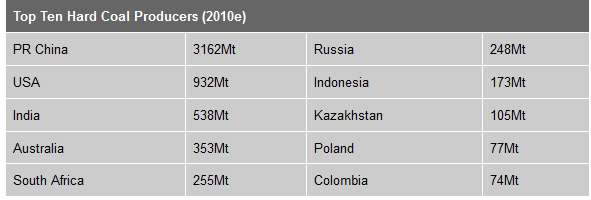


 Given this, investments in the development and deployment of CCS do seem rational. However, CCS is not quite as simple as in the cartoon. Almost every CCS scheme involves intercepting the emissions before they reach the air and redirecting them into the ground via some injection scheme. Infrastructure is needed for the separation of CO2 in the emission stack and sites need to be chosen which can contain the injected CO2. Given this, investments in the development and deployment of CCS do seem rational. However, CCS is not quite as simple as in the cartoon. Almost every CCS scheme involves intercepting the emissions before they reach the air and redirecting them into the ground via some injection scheme. Infrastructure is needed for the separation of CO2 in the emission stack and sites need to be chosen which can contain the injected CO2.
Components needed for CSS
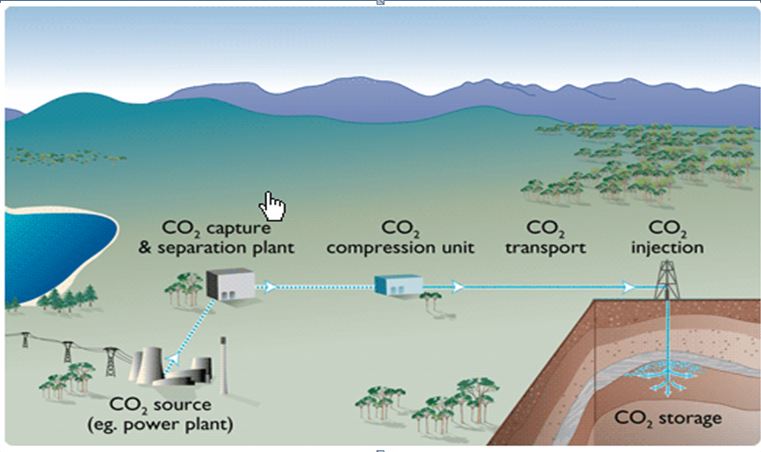
However, you can not just inject CO2 anywhere in the ground as the porous nature of most soils will simple let the CO2 leak out over time. A good situation is if the power plant is located over an abandoned coal seam or oil deposit
and the CO2 can be directly injected into those cavities. The most ideal situation is if an evacuated aquifer is available.
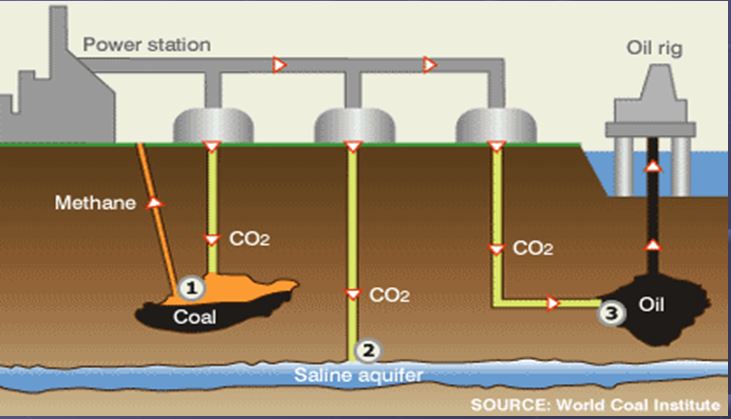
Various injection methods and depths are summarized in the figure below. Generally speaking, the deeper the injection the more expensive the process becomes.
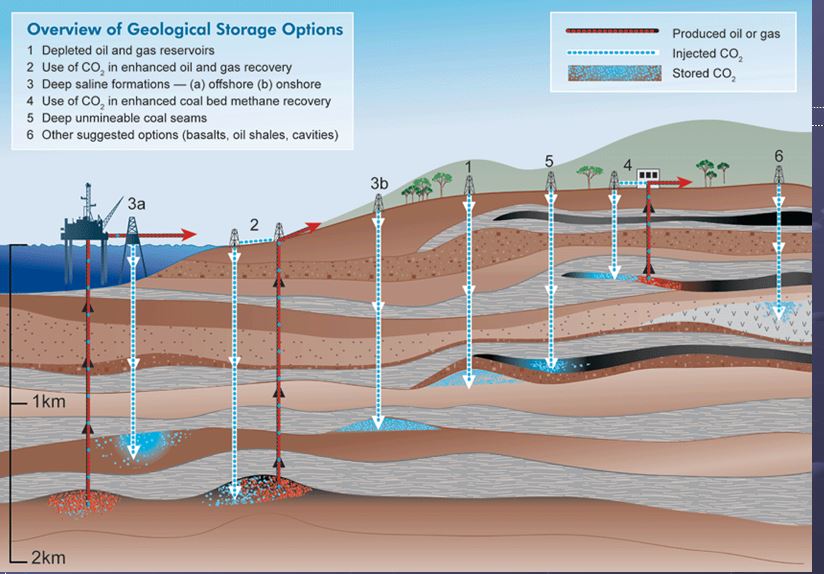
The environmental incentive behind CCS is directly related to stabilizing the amount of CO2 in the atmosphere; this was discussed earlier. The concept behind stabilization is that there needs to be a shared planetary budget for greenhouse gas emissions and as emission space dwindles, emission permit prices should rise. None of this is happening right now or does it look like it will happen in the near future
 The costs of stabilization are shown here. Theyare higher for the lower levels because we have less time to deploy the necessary CCS infrastructure to meet that goal. Currently CO2 levels are at 400 ppm and CO2e is about 425. We have run out of time to meet 450 ppm. The longer we wait, the more costly it becomes. Our window on 550 ppm (red line) is beginning to close as well. The costs of stabilization are shown here. Theyare higher for the lower levels because we have less time to deploy the necessary CCS infrastructure to meet that goal. Currently CO2 levels are at 400 ppm and CO2e is about 425. We have run out of time to meet 450 ppm. The longer we wait, the more costly it becomes. Our window on 550 ppm (red line) is beginning to close as well.
To stabilize at 550 ppm by the year 2100 would mean cutting coal usage by a factor of 3 relative to the current usage trends. This is unlikely to happen in the near term. If we do nothing (most likely situation) then CO2 could reach 720 ppm by the year 2100 and CO2e would be about 800 ppm. That would be a disaster scenario but do we care?
There are approximately 7.8 gigatons of CO2 for ever 1 ppm. Therefore, 450 ppm represents 3500 gigatons currently in the atmosphere compared to the 11,000 giagtons of storage capacity. Hence, again, in principle, we easily have enough storage capacity to sequester the rest of our CO2 emissions until we stopped producing them because we have run out of our fossil base. Hence, part of overall solution space would involvement investment and building of CCS facilities.
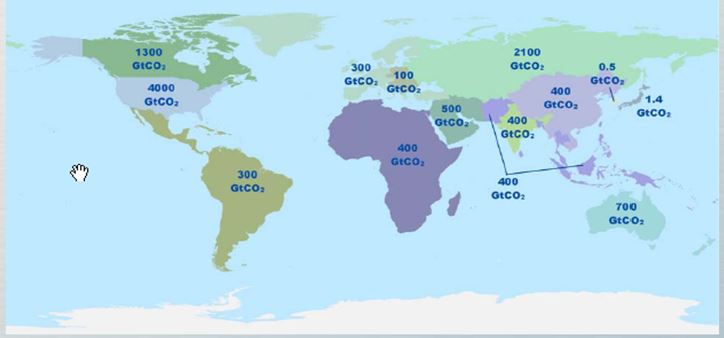
In terms of regional storage capacity, there is high variance among the world's total capacity of 11,000 gigatons. Note that currently we emit 7 Gigatons per year and therefore there is ample storage capacity to completely sequester carbon emissions. China has relatively small storage capacity but Canada, the US, and Australia are all good. Indeed, there is talk of Australia setting up facilities for China but nothing real is happening yet.The image below shows potential CO2 production compared to local reserves. The longer the bar the more difficult it is for any country to sequester its own CO2. In fact its only the countries shown below with yellow bars that can really do this.
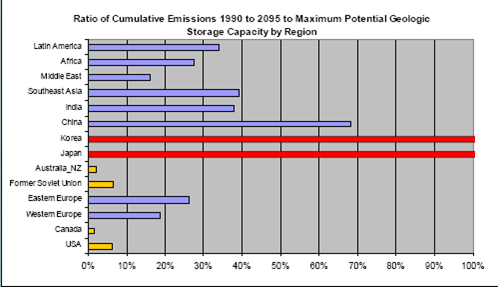
For power plants located near shore, one can pump CO2 down until it gets below 3 km depth, at which point in liquefies and settles out as a "lake" of CO2 that slows mixes
with deep ocean water. The Earth has been doing this for billions of years as a natural mechanism for CO2 uptake.

However, the sheer scale of the problem seems overwhelming as there are more than 8000 individual point sources of CO2 currently operating on the planet. So the challenge is large.
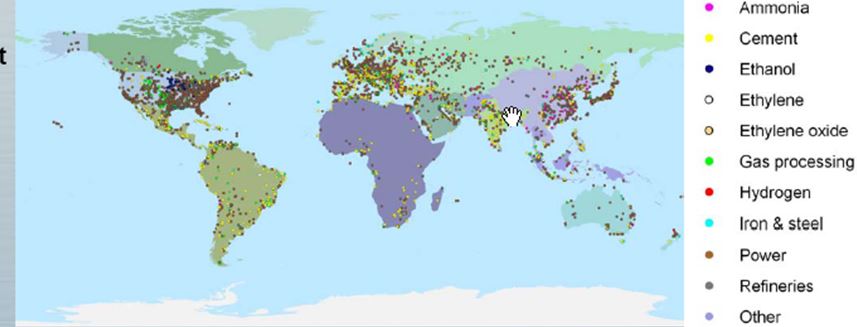
So we have the physical and technical capability to deal with CCS so why has there been so little movement? Simple answer: the economics are not favorable. The slide below shows the situation as of Feb 2012; click HERE for today's price of carbon - and you will see that it has dramatically lowered over the last 18 months. There is precisely zero financial incentive to put CO2 into the ground instead of into the atmosphere. Estimates suggest
a cost of $40-$80 per ton to inject CO2 into the ground. Given the current market price of about 5$ per ton, why would anyone put it in the ground?
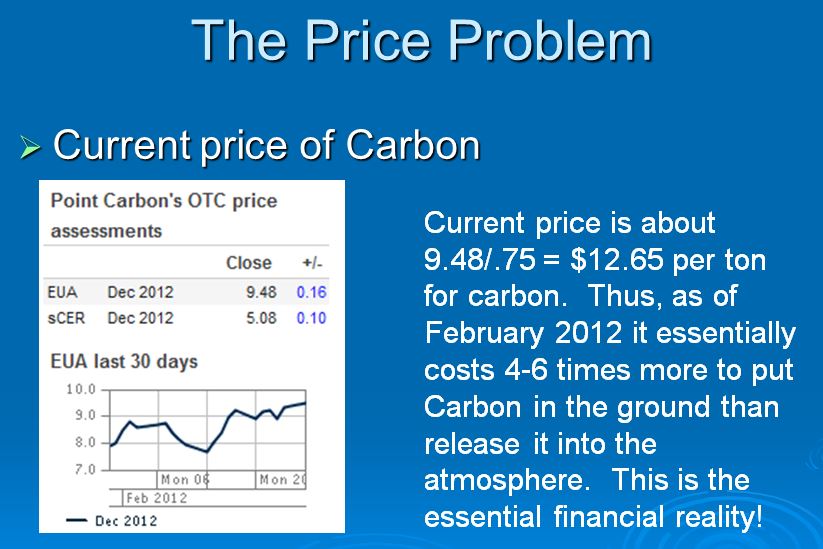
Despite all these obstacles there is at least one large scale test project that currently underway in the US. Initial results has produced some important calibration data:
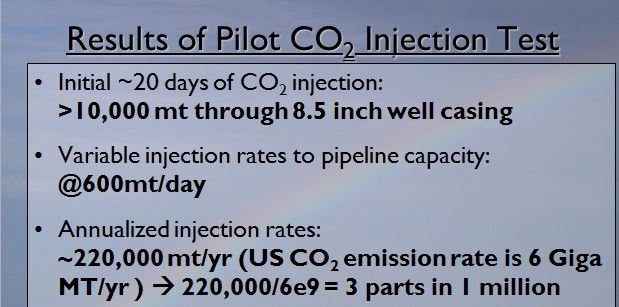
Given the scale of our emissions, we simply need to build another 300,000 sites like this to fully sequester our annual emissions. Now, to be fair, 1.3 of those emissions are due to transportation where sequestration is physically impossible. Still, this single facility with a throughput of 3 parts per million would shows the severity of the problem.
In sum, while CO2 injection into the ground is physically possible there currently is no economic incentive for industry to do so. In addition, there are several
physical questions that remain uncertain:
- How many injector wells are needed, say at a 1000 MW coal fired site?
- What is the spacing of the injector wells?
- Can the same injectors be used for decades or do they wear out?
- Does the reservoir leak (is it porous)?
CCS does have high potential and does represent a direct climate-change mitigation technology but the current economic model to support CCS is not good unless significant fines and penalties for total country emissions are enacted. Who is going to do that? The next 5-10 years are a critical window to build pilot CCS projects (like the one in Michigan) so as to gain real world
experience and assess the overall ability for CCS technology to scale to the problem.
|









